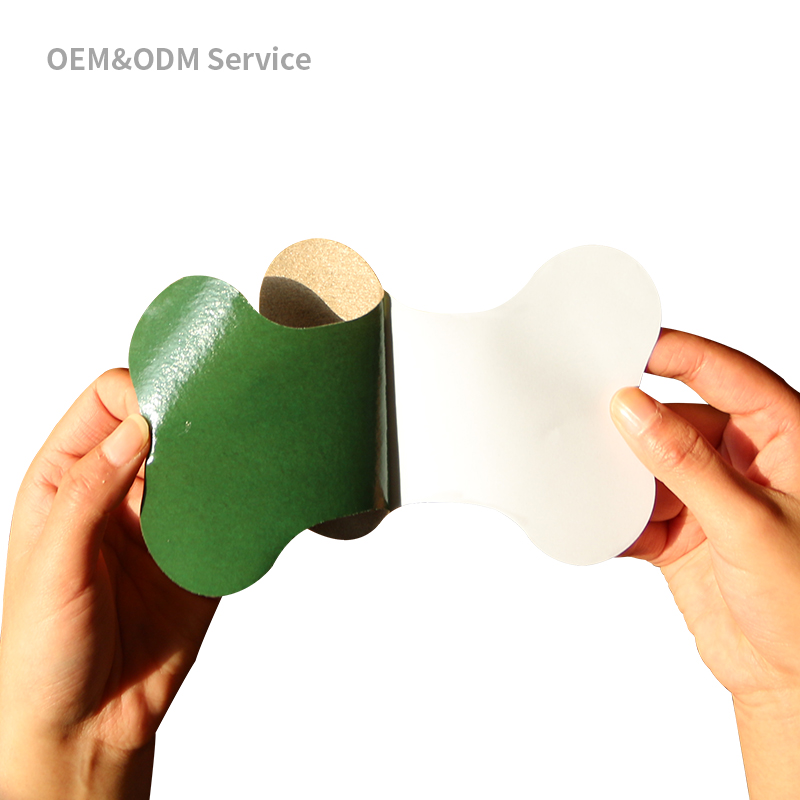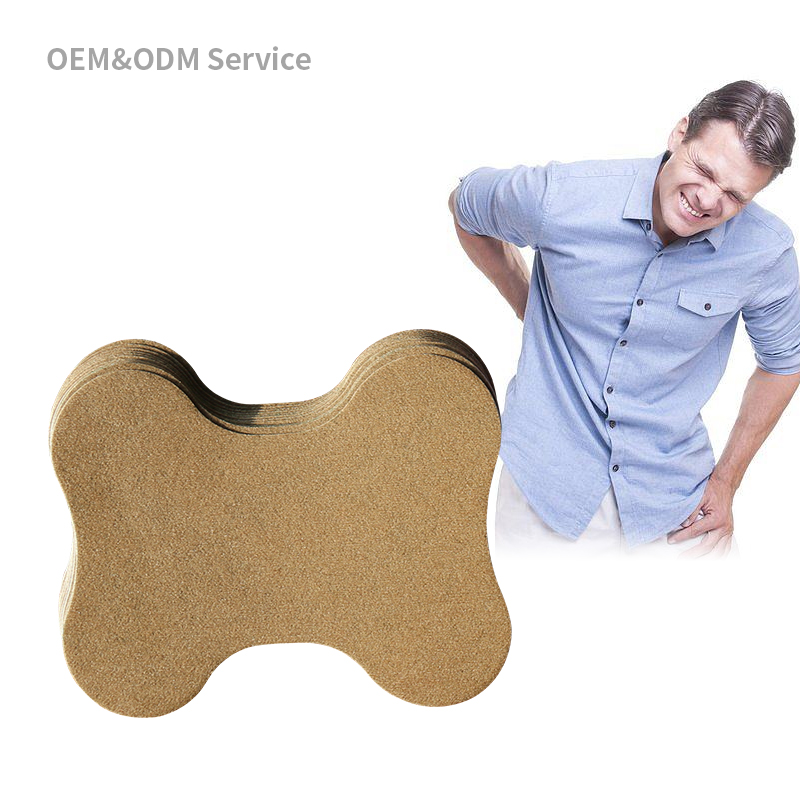Are Custom Lumbar Pain Relief Patches Compliant with Regulatory Standards?
In the ever-evolving healthcare industry, the development of Custom Lumbar Pain Relief Patches has gained significant traction. These patches offer tailored solutions for managing pain, making them an attractive option for businesses looking to expand their product offerings. However, one of the most critical considerations when developing and distributing these patches is ensuring compliance with regulatory standards. This article explores the regulatory landscape for custom lumbar pain relief patches, discussing the key standards that must be met and how partnering with a reputable Lumbar Pain Relief Patches manufacturer, OEM provider, or supplier can help navigate these challenges.

1. Understanding Regulatory Standards for Medical Devices
Lumbar Pain Relief Patches are generally classified as medical devices, and as such, they are subject to strict regulatory oversight in most regions. The classification of the patch, whether it is a Class I, II, or III device, depends on the specific ingredients, mechanism of action, and intended use.
FDA Regulations in the United States: In the U.S., the Food and Drug Administration (FDA) oversees the regulation of medical devices, including pain relief patches. For Custom Lumbar Pain Relief Patches, compliance with the FDA's 21 CFR Part 820 (Quality System Regulation) is essential. This regulation outlines the requirements for design, manufacturing, packaging, labeling, storage, and distribution. Additionally, the patch may need to be cleared through the FDA’s 510(k) process if it is a new product or contains novel features.
CE Marking in the European Union: In the European Union, medical devices must comply with the Medical Devices Regulation (MDR). Custom Lumbar Pain Relief Patches intended for the EU market must obtain a CE mark, which indicates that the product meets the essential safety and performance requirements. The process involves a conformity assessment, which may include clinical evaluations and risk management.
Other International Standards: Other regions, such as Canada, Japan, and Australia, have their own regulatory frameworks for medical devices. For example, Health Canada requires medical devices to comply with the Medical Device Regulations (SOR/98-282), while Japan’s Pharmaceuticals and Medical Devices Agency (PMDA) enforces the Pharmaceutical Affairs Law (PAL).
2. Key Considerations for Compliance
Ensuring that Custom Lumbar Pain Relief Patches are compliant with regulatory standards requires a comprehensive approach that covers various aspects of the product's lifecycle.
Ingredient Safety: The active and inactive ingredients used in the patch must be safe for use on the skin and should not cause any adverse reactions. This includes ensuring that any adhesives, carriers, or excipients used in the patch are biocompatible. Working with a trusted Lumbar Pain Relief Patches manufacturer or OEM provider can help ensure that only approved ingredients are used.
Labeling and Packaging: Accurate and clear labeling is critical for regulatory compliance. The label must include information on the ingredients, usage instructions, warnings, and the manufacturer's details. In the EU, the label must also include the CE mark. Additionally, the packaging should be designed to protect the patch from contamination and damage during storage and transport.
Clinical Evaluation: Depending on the classification of the patch, a clinical evaluation may be required to demonstrate its safety and effectiveness. This may involve conducting clinical trials or providing evidence from existing studies. Collaborating with a Lumbar Pain Relief Patches OEM can help streamline this process by leveraging their experience in conducting clinical evaluations.
Quality Management System (QMS): Implementing a robust QMS is essential for ensuring that the patches are consistently manufactured to meet quality standards. The QMS should cover all aspects of the manufacturing process, including design control, risk management, document control, and post-market surveillance. Manufacturers should be ISO 13485 certified, which is the international standard for medical device quality management systems.
3. Working with a Lumbar Pain Relief Patches Manufacturer
Partnering with a reputable Lumbar Pain Relief Patches manufacturer is crucial for ensuring regulatory compliance. These manufacturers have the expertise and infrastructure needed to navigate the complex regulatory landscape and bring compliant products to market.
Expertise in Regulatory Requirements: A reputable manufacturer will have in-depth knowledge of the regulatory requirements for medical devices in different regions. They can guide you through the process of obtaining the necessary certifications and approvals, whether you’re targeting the U.S., EU, or other international markets.
Customization and Compliance: When developing Custom Lumbar Pain Relief Patches, it’s important to ensure that any customization does not compromise compliance. This includes choosing safe and effective ingredients, designing packaging that meets regulatory standards, and ensuring accurate labeling. An experienced manufacturer can help you achieve this balance.
Post-Market Surveillance: Compliance doesn’t end once the product is on the market. Post-market surveillance is essential for monitoring the safety and performance of the patches over time. This involves collecting and analyzing data on adverse events, product complaints, and other feedback. Manufacturers with a robust post-market surveillance system can help ensure ongoing compliance and address any issues that arise.
4. Common Regulatory Challenges and How to Overcome Them
Navigating the regulatory landscape for Custom Lumbar Pain Relief Patches can be challenging, particularly when dealing with multiple markets and regulatory frameworks. Below are some common challenges and strategies for overcoming them.
Navigating Multiple Regulatory Frameworks: If you’re planning to market your patches in multiple regions, you’ll need to comply with each region’s regulatory requirements. This can be time-consuming and costly. To streamline the process, consider working with a manufacturer that has experience in global markets and can help you develop a product that meets the standards of all target regions.
Ensuring Ingredient Compliance: The use of novel or unapproved ingredients can lead to regulatory delays or even product recalls. To avoid this, work closely with your manufacturer to select ingredients that have a proven safety profile and are approved for use in your target markets.
Managing Clinical Evaluations: Conducting clinical evaluations can be complex and expensive, particularly for new or innovative products. To minimize costs and ensure a successful evaluation, collaborate with a manufacturer that has experience in designing and conducting clinical trials for similar products.
Maintaining QMS Certification: Keeping your QMS up to date and in compliance with ISO 13485 can be challenging, particularly as regulatory requirements evolve. Regular audits and ongoing training can help ensure that your QMS remains compliant.
5. The Role of Lumbar Pain Relief Patches OEM Providers
OEM providers play a critical role in ensuring that Custom Lumbar Pain Relief Patches meet regulatory standards. By leveraging their expertise, you can focus on developing a unique and effective product while leaving the complexities of compliance to the experts.
Design and Development Support: OEM providers can assist with the design and development of the patches, ensuring that the final product is both effective and compliant. This includes selecting suitable materials, designing the patch’s structure, and optimizing the formulation for regulatory approval.
Regulatory Documentation: OEM providers can prepare and manage the necessary regulatory documentation, including the technical file, risk management file, and clinical evaluation report. This documentation is essential for obtaining regulatory approvals and maintaining compliance throughout the product’s lifecycle.
Supply Chain Management: Managing the supply chain for medical devices can be complex, particularly when sourcing materials from multiple suppliers. OEM providers can help streamline the supply chain, ensuring that all materials meet regulatory standards and are traceable throughout the manufacturing process.
Related Questions and Answers
What regulatory standards must Lumbar Pain Relief Patches comply with in the U.S.?
- Lumbar Pain Relief Patches in the U.S. must comply with FDA regulations, including 21 CFR Part 820 (Quality System Regulation) and may require clearance through the 510(k) process.
How do I ensure my Custom Lumbar Pain Relief Patches are compliant in the EU?
- To market in the EU, your patches must comply with the Medical Devices Regulation (MDR) and obtain a CE mark. This involves a conformity assessment and may require clinical evaluations.
Can a Lumbar Pain Relief Patches manufacturer help with regulatory compliance?
- Yes, partnering with a reputable manufacturer can ensure that your patches meet all necessary regulatory standards. They can assist with ingredient selection, labeling, clinical evaluations, and more.
What are the risks of non-compliance with regulatory standards?
- Non-compliance can result in product recalls, fines, and damage to your brand’s reputation. In severe cases, it may lead to legal action or bans on selling the product in certain markets.
What role does post-market surveillance play in regulatory compliance?
- Post-market surveillance is essential for monitoring the safety and performance of the patches after they’ve been launched. It helps identify any issues that may arise and ensures ongoing compliance with regulatory standards.
Conclusion
Ensuring that Custom Lumbar Pain Relief Patches are compliant with regulatory standards is a complex but essential aspect of product development and distribution. By understanding the regulatory requirements in your target markets and partnering with a knowledgeable Lumbar Pain Relief Patches manufacturer or OEM provider, you can navigate these challenges successfully.
From ingredient selection and clinical evaluations to labeling and post-market surveillance, every step of the process must be carefully managed to ensure compliance. By doing so, you not only protect your business from legal and financial risks but also ensure that your customers receive a safe and effective product that meets their needs.
In today’s competitive market, regulatory compliance is not just a requirement but an opportunity to differentiate your brand and build trust with consumers. With the right approach and the right partners, you can bring compliant, high-quality Custom Lumbar Pain Relief Patches to market and achieve long-term success.






